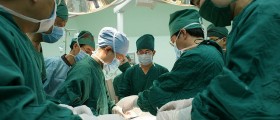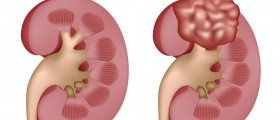
Lymphocele most commonly represents a complication of different surgical procedures. It particularly occurs if the surgery evolves manipulation in a very large area which is well supplied with lymphatic tissue. Any kind of the injury to this lymphatic tissue, to be more precise to lymphatic vessels may result in leakage of the lymph and formation of a lymphocele.
There are several more complications in a form of swelling and accumulation which are similar to lymphocele and they include hematoma, seroma, abscess and urinoma. After certain examinations and tests the doctor can set the definitive diagnosis.
Causes and Symptoms of Lymphocele
Symptoms of lymphocele basically depend on the site of its formation and its size.
In case of renal transplantation surgery postoperative formation of lymphocele represents an emergency state. Renal transplant surgery is a serious procedure and if a lymphocele has formed it must not be left neglected. The very presence of lymphocele carries significant risk of organ rejection. Lymphocele can also interfere in normal functioning of the transplanted organ. So the symptoms are in this case connected to organ rejection and improper functioning of the transplanted kidney.
Lymphocele may also occur after radical hysterectomy. In this case prevention against lymphocele can be successful due to placing of drains which eliminate excessive fluid and act against its accumulation. There may not be any symptoms of lymphocele after radical hysterectomy and the condition can be found during postoperative ultrasonography or CT of the pelvis.
Lymphocele may also affect patients after a blunt trauma of the chest. The injury of the thoracic duct causes leakage of the lymph and formation of a lymphocele in the mediastinum. Apart from the symptoms related to trauma the lymphocele in this case can eventually cause breathing difficulties or be rather small and asymptomatic.
Apart from the previously mentioned lymphocele may also occur after pelvic and aortic lymphadenectomy.
Treatment for Lymphocele
The treatment for lymphocele depends on the severity of symptoms caused by the pressure of lymphocele. Lymphocele may withdraw spontaneously and in some cases the surgeon places a drain in order to eliminate the collected fluid. In more severe cases the patient undergoes surgical removal of the lymphocele.

















Your thoughts on this
Loading...